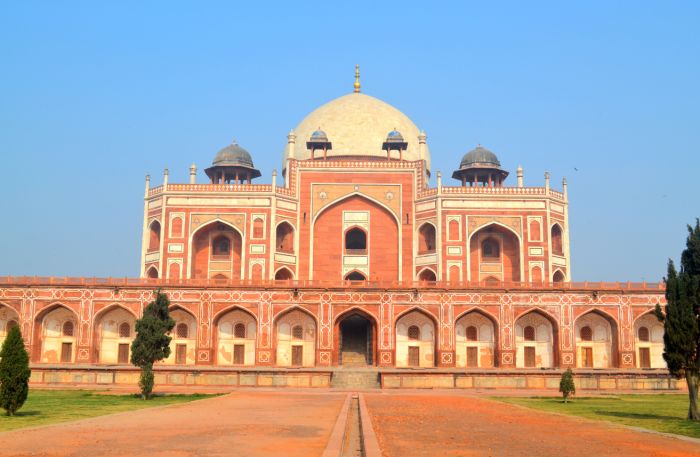
Oct 01, 24
A Day in Old Delhi: Experience the City’s Heritage
Stepping into Old Delhi is like traveling back in time to a place where history, culture, and chaos converge in a fascinating blend....
Stepping into Old Delhi is like traveling back in time to a place where history, culture, and chaos converge in a fascinating blend. Once the heart of Mughal India, this historic part of Delhi retains much of its charm and continues to be one of the most vibrant, bustling areas in the city. Whether you’re exploring its narrow alleys, iconic landmarks, or savoring the delicious street food, spending a day in Old Delhi is an experience like no other.
Historical Significance of Old Delhi
Shah Jahan’s Vision for a New Capital
Old Delhi, originally known as Shahjahanabad, was founded by Mughal emperor Shah Jahan in 1638 when he decided to move his capital from Agra to Delhi. His vision was to create a city that reflected the splendor of his empire, with imposing forts, grand mosques, and bustling markets. The city was designed with wide avenues and impressive architecture, centered around the majestic Red Fort.
The Rise of Delhi as the Mughal Epicenter
Under the Mughal rule, Old Delhi became the epicenter of power, culture, and trade. The Chandni Chowk market, designed by Shah Jahan’s daughter, became one of the most famous markets in the world, attracting traders from across Asia and Europe. The grandeur of Mughal architecture, combined with the city’s role as a major political and cultural hub, cemented Old Delhi’s place in history.
Exploring Chandni Chowk – The Heart of Old Delhi
The Bustling Bazaar Life
No trip to Old Delhi is complete without visiting Chandni Chowk, one of India’s oldest and busiest markets. The narrow lanes are filled with a whirlwind of activity, with vendors selling everything from textiles and jewelry to electronics and spices. The market has a unique charm, offering a sensory overload with its vibrant colors, sounds, and scents.
Famous Street Foods to Savor
Chandni Chowk is a food lover’s paradise, offering some of the best street food in India. Don’t miss out on iconic dishes like chole bhature, jalebi, and parathas from the legendary Paranthe Wali Gali. The mouth-watering aromas fill the air, and each bite offers a taste of Old Delhi’s rich culinary heritage.
Visiting Ancient Shops and Havelis
While exploring Chandni Chowk, you’ll come across ancient havelis (traditional mansions) and shops that have been in business for centuries. These historic buildings are a reminder of Old Delhi’s past and offer a glimpse into the lives of the merchants and aristocrats who once lived here.
Discovering Iconic Landmarks
Red Fort – A Symbol of Mughal Grandeur
The Red Fort (Lal Qila) is one of the most iconic landmarks in India, symbolizing the might of the Mughal Empire. Built by Shah Jahan in 1648, the massive red sandstone fort stands as a UNESCO World Heritage site. Inside, you’ll find impressive structures like the Diwan-i-Aam (Hall of Public Audience) and the Diwan-i-Khas (Hall of Private Audience), which reflect the opulence of the Mughal court.
Jama Masjid – India’s Largest Mosque
Located just across from the Red Fort is Jama Masjid, the largest mosque in India. Built by Shah Jahan in 1656, this grand mosque can hold up to 25,000 worshippers at a time. The sprawling courtyard and intricate architecture make it a must-visit for anyone exploring Old Delhi’s spiritual side.
Raj Ghat – Tribute to Mahatma Gandhi
A short distance from Old Delhi lies Raj Ghat, the memorial dedicated to Mahatma Gandhi, where his cremation took place in 1948. The simple black marble platform, surrounded by gardens, serves as a peaceful tribute to the Father of the Nation.
A Journey through Spiritual Sites
Gurudwara Sis Ganj Sahib – Sikh History in Old Delhi
Gurudwara Sis Ganj Sahib is a significant Sikh temple in Old Delhi, built in honor of Guru Tegh Bahadur, the ninth Sikh Guru. The Gurudwara stands at the site where the Guru was executed in 1675 by Mughal emperor Aurangzeb. It remains a place of worship and a symbol of resilience for the Sikh community.
Digambar Jain Lal Mandir – The Oldest Jain Temple in Delhi
The Digambar Jain Lal Mandir, located near the Red Fort, is the oldest Jain temple in Delhi. Built in 1656, this temple is renowned for its serene atmosphere and the adjacent bird hospital, which provides care for injured birds, reflecting the Jain principle of non-violence.
Unveiling the Architectural Wonders
Mughal Architecture and Design
Old Delhi is home to some of the finest examples of Mughal architecture. The buildings are characterized by large domes, intricate carvings, and the extensive use of red sandstone and marble. Whether it’s the towering minarets of the Jama Masjid or the ornamental gardens of the Red Fort, Mughal architecture in Old Delhi is both functional and aesthetically stunning.
The Influence of Persian Art and Culture
The architecture of Old Delhi also reflects a strong Persian influence, particularly in the design of the mosques, forts, and palaces. Persian artisans were employed by the Mughal emperors to create intricate tilework, calligraphy, and floral motifs that adorn many of the structures.
Navigating the Narrow Alleys of Old Delhi
Rickshaws and Walking Tours
The best way to explore Old Delhi’s winding lanes is either by foot or on a rickshaw ride. Rickshaws offer a unique way to experience the chaotic yet charming streets, while walking tours provide a more immersive experience, allowing visitors to stop and engage with the city’s history at their own pace.
Best Routes for an Immersive Experience
Start your day at Red Fort, move to Jama Masjid, and then lose yourself in the lanes of Chandni Chowk. This route will give you a full spectrum of Old Delhi’s rich history, architecture, and bustling market life.
Savoring the Flavors of Old Delhi
Paranthe Wali Gali – A Haven for Food Lovers
Paranthe Wali Gali is a narrow lane in Chandni Chowk famous for its deep-fried parathas (Indian flatbreads) stuffed with a variety of fillings, from potatoes to paneer. These delicious parathas are served with tangy chutneys and pickles, making it a must-visit for food enthusiasts.
The Iconic Karim’s Restaurant
For a more hearty meal, head to Karim’s, an iconic restaurant in Old Delhi that has been serving Mughal cuisine for over a century. Their famous dishes, like mutton korma and kebabs, offer a taste of royal Mughal flavors.
Shopping in Old Delhi’s Famous Markets
Khari Baoli – Asia’s Largest Spice Market
If you’re a fan of spices, Khari Baoli is the place to be. This market is the largest wholesale spice market in Asia, and it has been in operation since the 17th century. The rich aroma of spices fills the air as you walk through the market, making it an unforgettable experience for the senses.
Kinari Bazaar – The Lane of Traditional Crafts
Kinari Bazaar is known for its traditional crafts and wedding accessories. If you’re looking for intricate zari (embroidery) work, jewelry, or fabric, this market is a treasure trove of handmade goods and traditional Indian craftsmanship.
Capturing the Vibrant Culture of Old Delhi
Festivals and Celebrations in the Streets
Old Delhi comes alive during festivals like Diwali, Eid, and Holi, when the streets are filled with lights, music, and celebrations. These festivals offer a glimpse into the diverse communities that call Old Delhi home, from Hindus and Muslims to Sikhs and Jains.
The Diversity of Old Delhi’s Communities
Old Delhi’s narrow lanes are home to a rich diversity of communities, each contributing to the city’s cultural fabric. From the Muslim traders of Chandni Chowk to the Sikh devotees at Gurudwara Sis Ganj Sahib, the area is a melting pot of religions and cultures.
The Best Time to Visit Old Delhi
Seasonal Recommendations
The best time to visit Old Delhi is during the cooler months, from October to March, when the weather is pleasant and ideal for walking tours and sightseeing.
Avoiding the Crowds
Old Delhi can get extremely crowded, especially during weekends and festivals. To avoid the rush, try to visit during the weekdays, preferably in the morning when the markets are less congested.
Conclusion
Old Delhi offers a truly immersive experience that transports visitors into the heart of India’s history and culture. From exploring the majestic Red Fort and Jama Masjid to navigating the lively streets of Chandni Chowk and savoring its world-famous street food, a day in Old Delhi is an adventure that captivates all the senses. Whether you're a history buff, a foodie, or simply someone looking to experience the chaotic charm of India’s capital, Old Delhi will leave you spellbound.
FAQs
-
What is the best way to get around Old Delhi?
The best way to explore Old Delhi is by foot or by rickshaw, as the narrow lanes are often too crowded for cars. -
Is Old Delhi safe for tourists?
Yes, Old Delhi is generally safe for tourists, though it’s advisable to keep an eye on your belongings in crowded areas. -
What is the famous food of Old Delhi?
Old Delhi is known for its parathas, chaat, jalebis, and Mughal cuisine, especially at Karim’s restaurant. -
Can I visit Old Delhi’s markets in the evening?
Yes, Old Delhi’s markets are open till late evening, but it's best to visit during daylight hours to fully appreciate the sights and sounds. -
What is the entry fee for Red Fort?
The entry fee for Red Fort is INR 35 for Indian citizens and INR 500 for foreign tourists.
